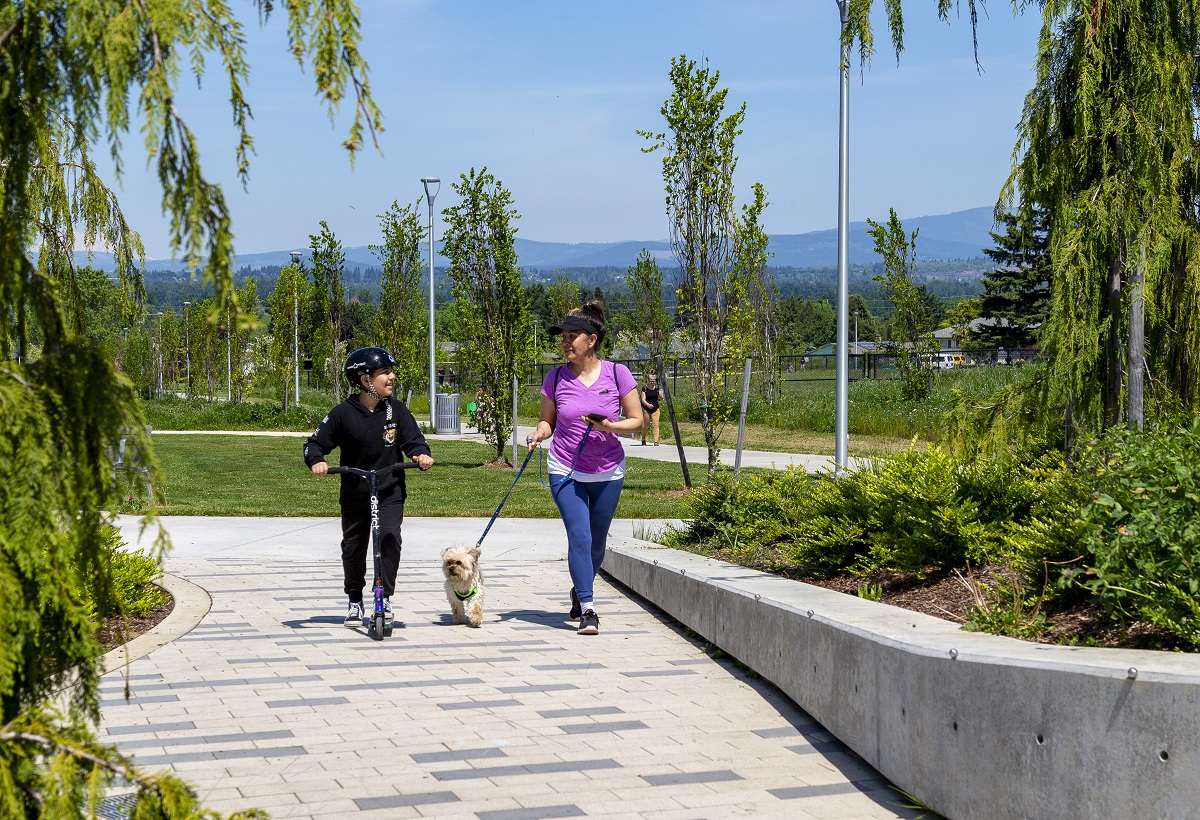
In the last few weeks, COVID-19 has brought lots of uncertainty to our everyday lives. Many of us are spending far more time at home than we would like now that many schools and workplaces are closed and social activities are cancelled for the foreseeable future. Right now, an afternoon walk around the block or stroll to a local park or greenspace can be a simple but potent step to take care of your physical and mental health.
These changes to daily life are essential acts of social distancing to slow the spread of the virus. However, it doesn’t necessarily mean you have to lock yourself up in your home. Lisa Maragakis, M.D., M.P.H., senior director of infection prevention at Johns Hopkins defines social distancing as “deliberately increasing the physical spaces between people to avoid spreading the illness.” In practice, that means limiting social interaction and staying at least six feet away from other people when you’re around them. In San Francisco, despite a legal requirement that residents shelter-in-place, according to the San Francisco Chronicle, “the directive allows for people to go outside — and in fact, health officers encouraged people to run, hike and walk their dogs, as long as they do it alone or with close family, and keep 6 feet away from others. Trails and parks are open, but people cannot gather in groups.”
The unusual circumstances of our daily lives these past few weeks have highlighted that safe routes to accessible outdoor spaces are a tremendous community asset. They provide enough spaciousness to enjoy public space (read: escape your home) and feel like we are still part of our communities without risking further spread of the virus. Under normal circumstances, time spent in parks and green spaces is tied to a whole host of health benefits, and that could be even more important during stressful times. According to the Center for Disease Control and Prevention, close proximity to parks and the safe routes to get there increases the likelihood that folks will engage in physical activity that boosts both physical and mental health.
However, the fact is that not everyone has safe access to great parks or green space. Neighborhoods with higher percentages of people of color and low-income families are often cut off from accessing great public spaces via active transportation because of federal highways built through their communities and a lack of safe infrastructure like bike lanes and sidewalks. It is also important to note that with the spread of COVID-19, there have been increased instances of racism against Chinese Americans and other people of Asian descent. Watch this video from a Chinese-American teen discussing her experience with racism coupled with the spread of COVID-19. As a result, people may feel unsafe accessing the public green spaces that could relieve the stress of these tumultuous times because they are dealing with the added burden of racist policies and cultural beliefs.
If you have the fortune of living in a place where you can take a walk around the block and enjoy the outdoors, take the time to do it, and know that you are taking care of your physical and mental health. But also think about the ways that we can make outdoor spaces accessible to everyone regardless of who they are or where they live. If you want ideas for how to get started on improving safe, equitable park access, here are some tools to help.
Please note that you should consider the recommendation to spend time in parks and greenspace in the context of your state and local guidelines. Response to COVID-19 is different all over the country; please adhere to your local guidance on social distancing, self-isolation, and/or quarantine. Stay safe, take care of yourself, and do what is best for you and your community.
